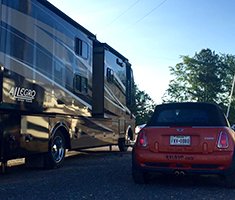This post may contain affiliate links.
It is no secret that RVs need maintenance and repairs. And the better job you do with regular preventative maintenance, the more likely you are to avoid costly repairs, and reduce the damage and downtime that prevent you from enjoying your RV travels.
In this post we cover 9 common RV maintenance items and share practical tips to help protect your investment. We’ve owned both gas and diesel RVs – 3 motorhomes and a travel trailer – over the past 8 years. And while every RV is different, there are some common RV maintenance items every owner should be paying attention to, no matter what you have. Of course, we always recommend you check your RV operator’s manual. But here are some of the important things we do as part of our RV maintenance.
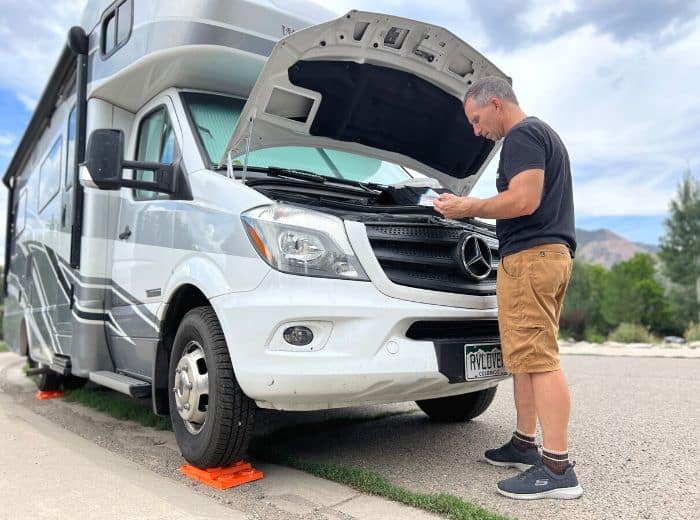
Every RV is different, so check the owner’s manual for your RV-specifics
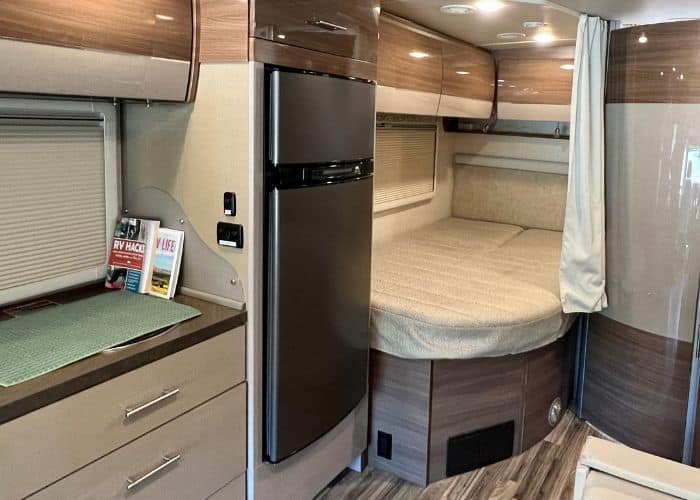
1. RV Refrigerator Maintenance
Though more RVs are transitioning to residential home style refrigerators, many (if not most RVs out there) still use absorption type refrigerators that run on propane, AC electricity, and sometimes DC electricity. These RV fridges require more maintenance than traditional residential refrigerators.
Two major factors are the RV needs to be level in order for the fridge to operate efficiently and safely, as RVs are frequently changing locations and re-leveling. And for part time and vacation RVers, the RV refrigerator does not stay on all the time since it is stored part of the time.
Many newer RV refrigerators can be operated while in motion. But it’s generally recommended to turn off RV fridges when stationary, and the RV is not level. Also, if it has a pilot light, turn the RV fridge off when entering a fuel station, to reduce fire risk.
You should also regularly check the area behind the fridge. There is usually an access panel on the outside of the RV, to ensure there are no insects, birds or other critters building nests. These can create flammable materials that increase the risk of an RV fire. By following some key RV fire safety tips, you can help prevent this from happening to you.
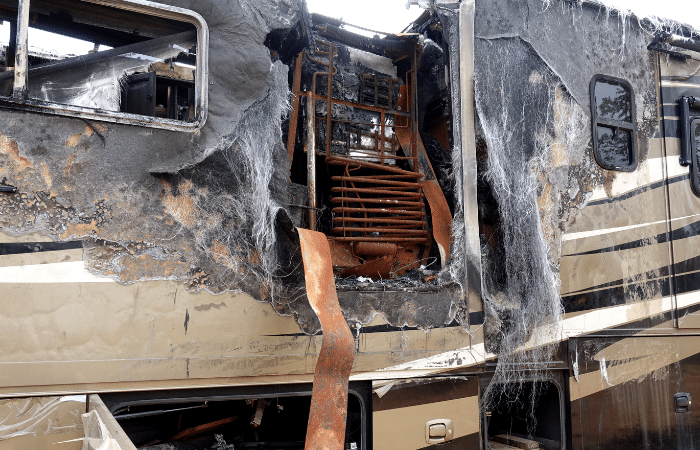
This RV fire started with the refrigerator, but this can often be prevented
Also, when in storage, the fridge doors should be left open so that it can air/dry out. We recommend leaving an open box of baking soda inside the fridge to reduce smells both when in use, and in storage. If possible, level your RV and turn on your RV fridge a day or two before you leave on your RV trip to give the fridge a chance to properly cool down before putting your food in it.
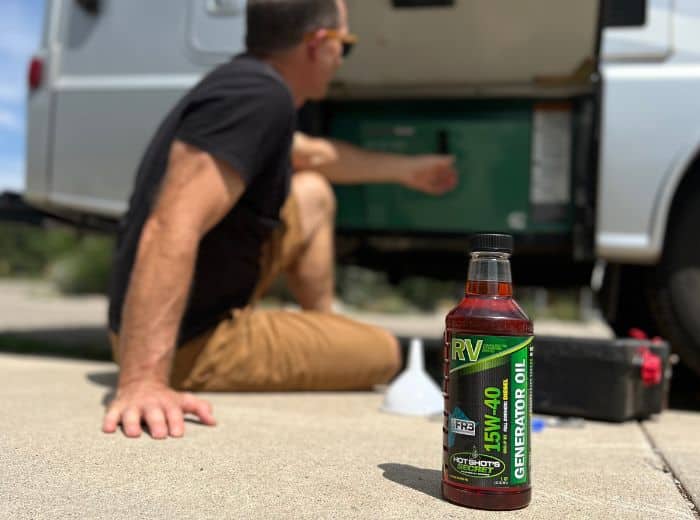
Changing your generator oil can be a quick and easy DIY job
2. RV Generator Maintenance
Many motorhomes – and some towable RVs – come with built-in generators. And many RVers buy small portable generators for their RVs. Built in generators usually run off of the primary fuel source of the RV whether that is diesel, gasoline, or propane. Like many mechanical systems, it is important to regularly exercise the equipment.
Most generators should be run at least once per month under a load to keep them properly maintained. When operating a generator, most recommend letting the generator run for a minute or two before putting it under load. And also a minute or two without a load before turning it off. Don’t just hit it with a major load the moment it turns on.
We change our generator oil at least once per year, regardless of how much the RV generator was used. For our most recent oil change we used this full synthetic diesel RV generator oil from Hot Shot’s Secret because we like the extra protections compared to regular oils for our diesel generator. Changing your RV generator oil is a quick and easy DIY RV maintenance job, and took less than 20 minutes.
For gas generators, whether on-board or portable (like the one we used with our Casita), you would obviously need to use gas RV generator oil.
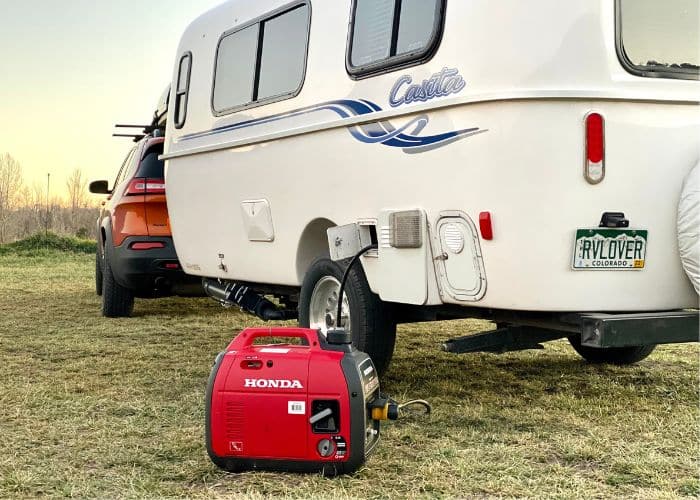
Stabilizing the fuel source when your RV is not in use
If you are storing your RV or portable generator for more than a month, consider adding fuel stabilizer to the fuel source to make sure the fuel doesn’t go bad and damage your RV generator. Fuel stabilizer is especially important for gasoline powered generators.
As we travel part time in our Class C diesel motorhome, we add Premium RV Diesel Treatment from Hot Shot’s Secret to our diesel fuel system in both the RV and RV generator. We like this fuel additive as it is scientifically proven to improve fuel economy, performance, and protects the engine with better fuel lubrication, and stabilization.
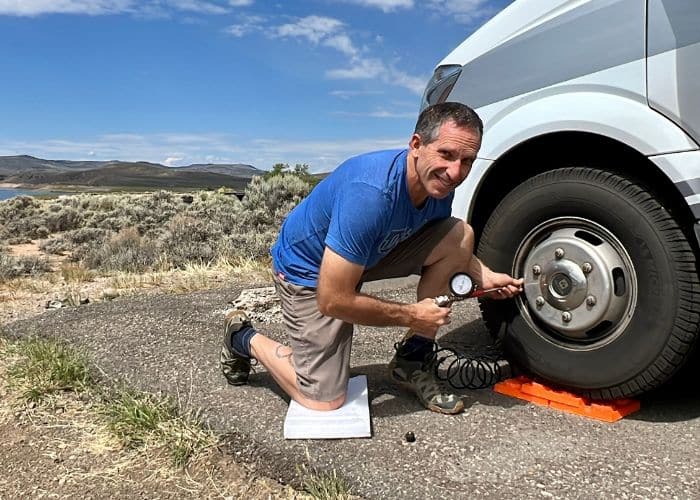
3. RV Tire Maintenance
As the saying goes ‘there’s a lot riding on your tires’. And RV tires can take a beating. Most RV tires spend significant amounts of time stationary, then travel down the road near or over their rated weight limits. Many RVers don’t pay enough attention to ensuring their RV tires are inflated properly. All of this can lead to premature failure of a tire (like a blowout) which can cause serious damage, and even injuries. That is why we are big proponents of using a Tire Pressure Monitoring System (TPMS) in our RV and carrying an air compressor to keep the RV tires properly inflated.
Another key factor in RV tire maintenance is that since most RVs don’t travel as many miles as our regular vehicles, the tires usually ‘age out’ before the tread wears out. RV tires have a recommended life expectancy. While it varies among tire brands, most recommend replacing your RV tires for increased safety and performance, after 5 years, up to 10 years maximum, depending on how well they were cared for. We keep a close eye on them and usually replace our RV tires around 5-7 years of age.
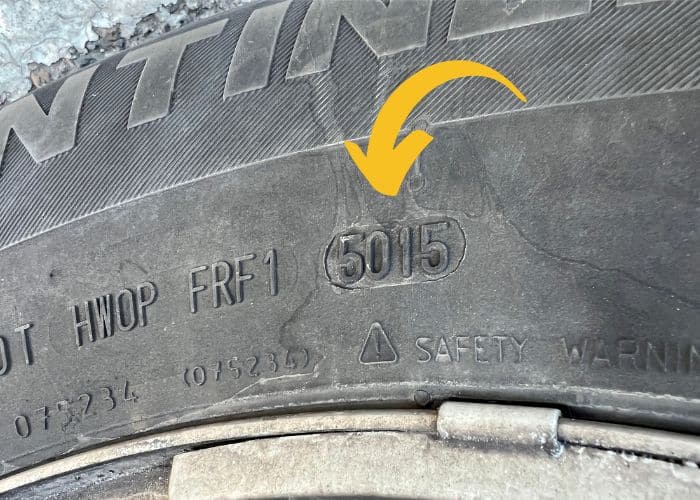
How do you know how old your tires are?
Most newer RV tires have a four digit code printed on one side of the tire. The code will usually be inside an oval or rounded rectangle shape, like in the picture above. The first two numbers represent the week, and the second two digits are the year the tires were made. For example, the tire shown in the example above was made in the 50th week of 2015.
Find more handy hacks for RV tires and driving tips in our book RV Hacks.
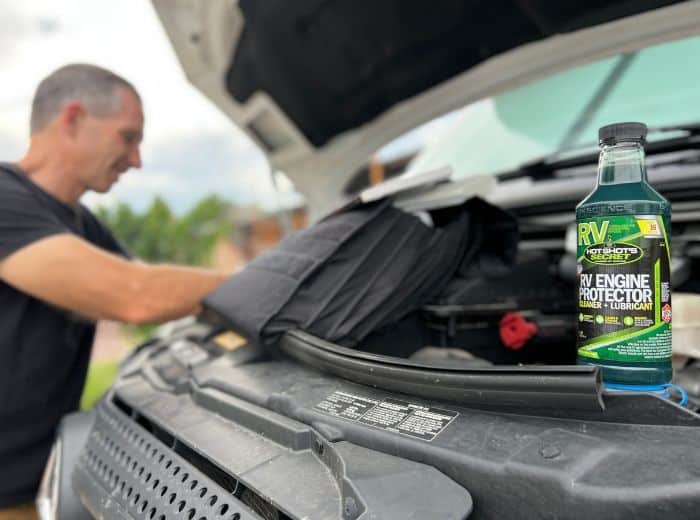
4. Truck / RV Engine Maintenance
Similar to RV tires, RV and truck engines often spend a lot of time working at or near their limits. So follow the recommendations for maintenance in your owner’s manual/s. Be diligent about taking your RV / truck in for regular scheduled maintenance to keep it running well. And consider if some maintenance items might need to be done sooner than would normally be recommended for lighter use.
RV and truck engine repairs can really get expensive, and we’ve had our share of RV repairs over the years! Diesel repairs are even more costly, especially the big diesel engines in large motorhomes. For example, in 2020 we needed to replace the fuel pump in our Class A 40’ diesel motorhome. That repair cost us over $9,000 and $5,000 of that was just for the part!
So with our new to us Class C diesel motorhome, we are being extra mindful of taking preventative care of the engine to keep it in top running condition. In our research, we found some of the best rated engine and drivetrain products are from Hot Shot’s Secret, which has a scientifically proven line of products designed specifically for RVs. We like using their RV engine protector as it cleans the engine components of stiction, varnish and other debris that builds up.
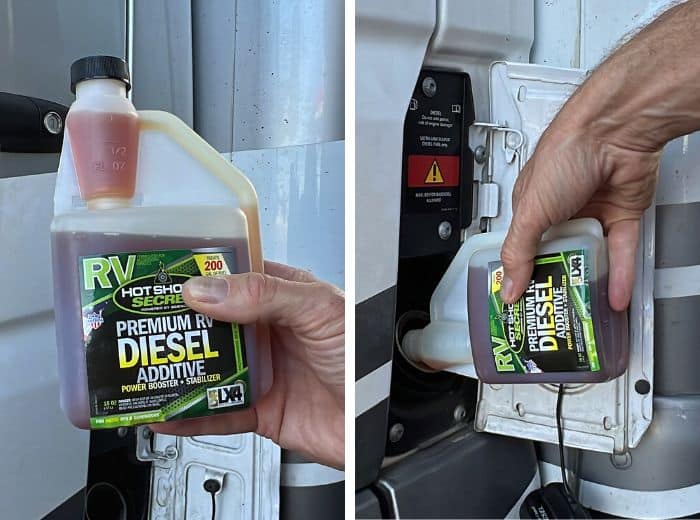
Adding a premium fuel additive to our RV fuel tank to improve performance
We also add 2 ounces of their premium RV diesel additive every time we fill the RV with fuel, for increased power, performance, and fuel economy. This also improves fuel stability, which is great if you aren’t using your RV often, or you’re putting it into long term storage.
If you don’t have a diesel engine, Hot Shot’s Secret also make products for gasoline powered trucks and RVs, including a premium RV gas additive. Their line of RV-specific products can be found at their website, on Amazon, auto parts stores, major truck stops, and Walmart.
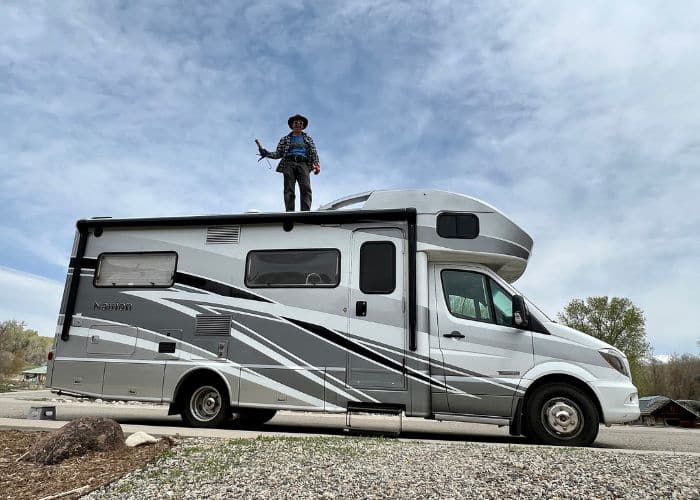
5. RV Roof Maintenance
RV roofs are made from a variety of materials, which require different maintenance. And, keep in mind that not all RVs have roofs that can withstand the weight of somebody walking around on them. But, all RVs should have regular inspections of the roof area to ensure there are no tears, or deteriorated sealants that can lead to water leaks.
Water intrusion is one of the most common and destructive things for RVs. Regularly checking the condition of your roof, and making sure everything is well sealed is one of the most important ways you can protect your RV investment. Since the roof materials vary, so will the products recommended to maintain it. Check your owners manual for the specific needs of your RV.
Two of the most common products used on RVs that we keep on hand for repairing seams and seals are Eternabond tape and Dicor self leveling lap sealant. For best results, remove old sealant first and clean the area, before applying new sealant. But again, check to ensure these products are suitable for your RV and roof.
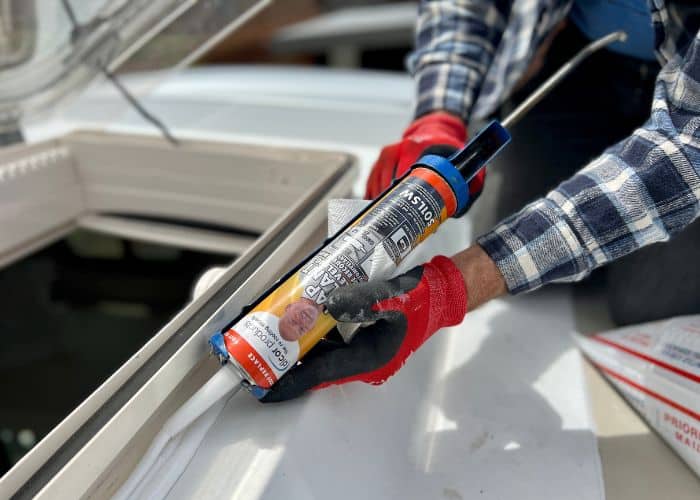
Marc applies new sealant around our RV roof skylight to prevent leaks
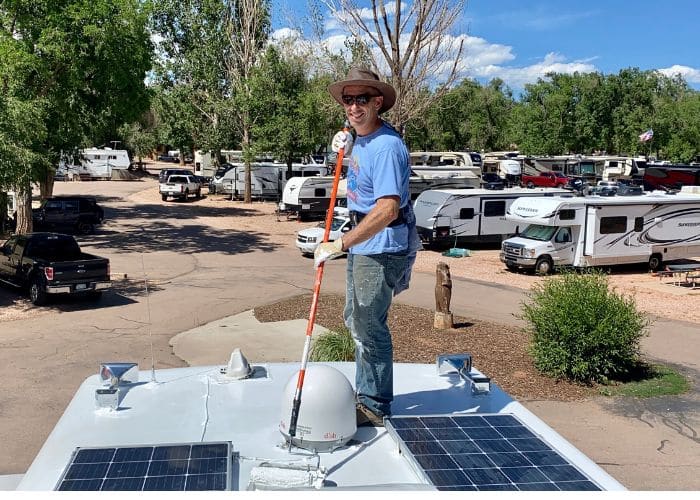
Cleaning and re-sealing the roof of our Class A motorhome
We had also noticed on our old Class A motorhome that the fiberglass roof was starting to deterioriate, and showing signs of hairline cracks. So we resealed the roof which made a huge difference! First, we used a roof cleaner, then this fiberglass RV roof coating. Of course, if you have a rubber roof on your RV, you’ll need to use a rubber roof cleaner and rubber RV roof coating suitable for your RV roof surface.
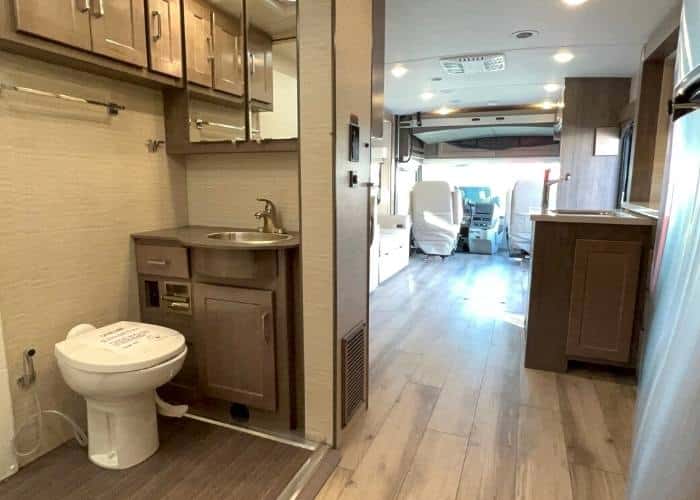
6. RV Toilet Maintenance
RVs use a large variety of toilets, and they aren’t like the toilets in traditional stick and brick homes. Some RV toilets require more maintenance than others, but nearly all will require much more maintenance than a regular residential toilet. There are several different kinds of RV toilets that function quite differently.
Macerating toilets can be severely damaged if you flush anything other than what comes out of your body and some toilet paper. Vacuflush toilets have complex gasket and pressure systems that lose their ability to seal properly and need to be replaced.
Even simple gravity toilets have gaskets that can lose their ability to seal properly, especially if the water in the area causes mineral deposits to accumulate. You can scrape these deposits off of the gasket with a plastic spoon or plastic knife if it gets bad, but often you can maintain using a little plumber’s grease on the gasket.
RV Toilet Hack
Here’s a quick, cheap and easy tip for a toilet gasket losing its seal and not properly holding water in the bowl. This is hack #123 from our latest book RV Hacks. Try pouring some vinegar into the toilet and let it sit in there for a couple of hours. As the vinegar seeps through the seal, it will eat away at the deposits, helping restore a better seal. Here’s a quick video example. This handy tip has fixed our toilets many times over the years.
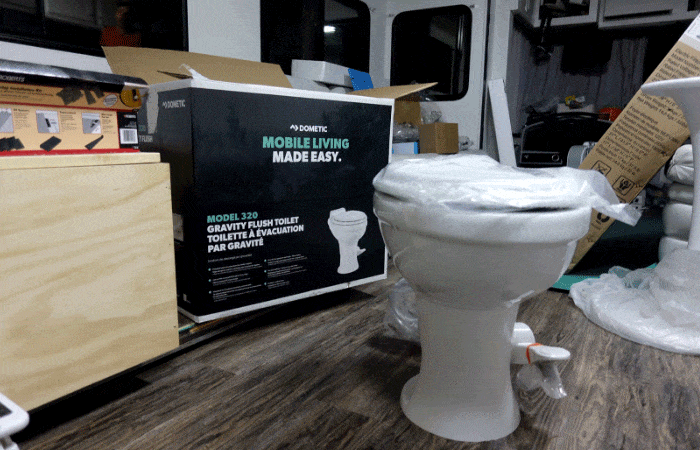
Eventually, you will probably need to replace the gaskets, or even replace the toilet with a new one. Most RV toilets are not built to last as long as residential toilets, but fortunately they aren’t too expensive and you can DIY a toilet replacement fairly easily. Here’s the toilet we upgraded to in our previous motorhome, during our Ultimate RV Makeover. It was a huge improvement!
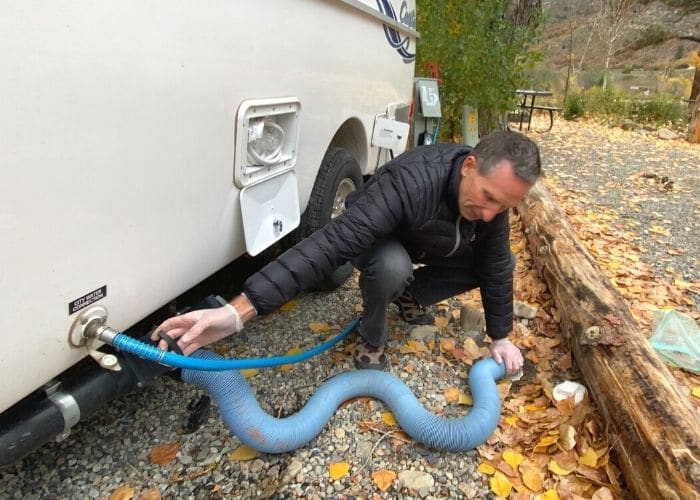
7. RV Waste Tank Maintenance
While we’re on the topic of RV toilets, let’s talk about maintenance of your waste tanks for the RV toilets (the black tank). And also the waste water tanks for your kitchen and other plumbing (the gray tank).
First up, ALWAYS keep the black tank emptying valve closed unless you are actively dumping the tanks. And, you should have at least a half tank of liquids in the black tank before emptying. If you leave this valve open while connected to a sewer connection the liquids will continue to drain out, but leave the solids behind. This mass will continue to build up and create a dried out ‘pyramid of poo’ that can be very difficult to remove. This is one of our 8 tips for avoiding a sewer tank disaster in RV Hacks – you can find more of them in chapter 2.
While it is personal choice, we also like to regularly use a waste tank treatment product that helps break down solids and reduce odors in the black and gray tanks. There are many different products out there, but the one we have had the best experience with over the years is Happy Camper organic toilet treatment. We add it to the water in the RV toilet after dumping the black tank. You can even add some to your grey tank to help reduce odors, especially on hot days.
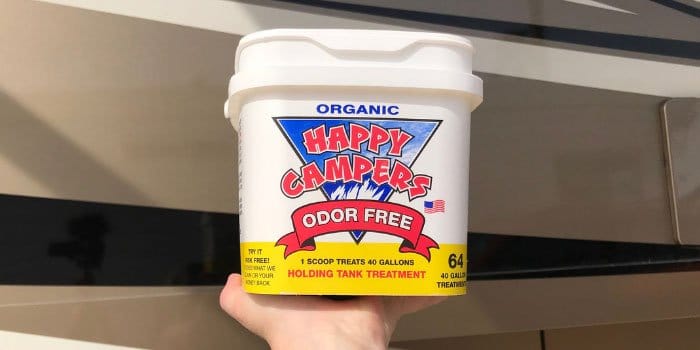
Another RV Waste System Check
When dumping your waste tanks, if waste water comes out when you remove the sewer caps, it may be a sign you need to replace your waste tank blade valves. Or, it may be even easier and less messy to simply add this twist-on waste valve to prevent leakage, as a preventative measure.
Finally, check underneath your RV periodically to ensure your holding tanks aren’t leaking. It’s not uncommon for the cheap rubber fittings to deteriorate over time, causing cracks and leaking contents! Don’t ask us how we know!
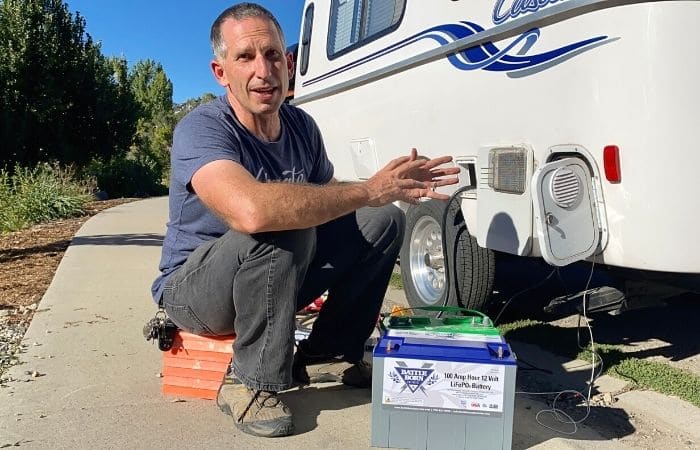
Marc upgrading the lead acid battery to a lithium battery, in our Casita camper
8. RV Battery Maintenance
Though lithium batteries are getting more and more popular (we have had Battle Born Batteries in our last three RVs), most RVs still use lead acid batteries. Many lead acid batteries off gas this liquid when charging and therefore need to have the water topped back up regularly.
In our first motorhome, we needed to check the lead acid batteries every month – and top off with distilled water as needed. Lead acid batteries are a lower cost for initial purchase, but they require more maintenance, are much heavier and don’t last nearly as long as a quality lithium battery of similar power. So keep that in mind when it comes time to replace or upgrade your batteries.
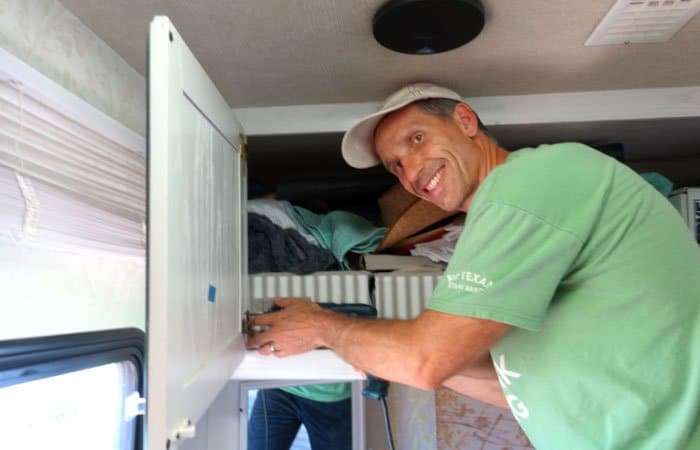
9. General RV Interior Maintenance
Since RVs are literally our homes on wheels, most end up traveling down the road, bouncing and swaying from the movement. All that movement is like subjecting the RV to a mini-earthquake every time you take your RV out. Especially if you travel on bumpy dirt roads to your favorite boondocking sites.
This movement inevitably leads to the loosening of screws, plumbing, and electrical fittings, and other wear and tear. Keep a few basic tools on hand, and regularly check and re-tighten screws, check your plumbing and electrical connections, and ensure everything is properly secured for travel, as this can help reduce damage to your RV.
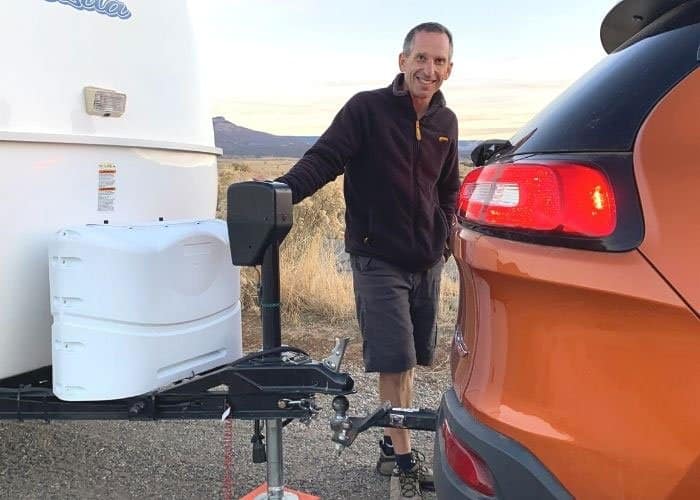
RV Maintenance – Prevention is Key
Of course there are many other areas of RV maintenance. But these are the ones common to most RVs. Again, every RV is different, so refer to your RV owner’s manual for specific recommendations on the systems and appliances used in your rig. As you would expect, the more complex the RV, the more items there are to maintain.
By taking good care of your RV, investing time and effort into preventative maintenance, and using good quality products, you’ll keep it in good running order, and can avoid many common and costly issues down the road. Not only will this make your RV travels more reliable and enjoyable, it will help maintain the value of your RV investment.
Want more RV repairs and maintenance tips?
You’ll find dozens more in our book RV Hacks. Chapter 2 in particular has RV repairs and maintenance hacks.
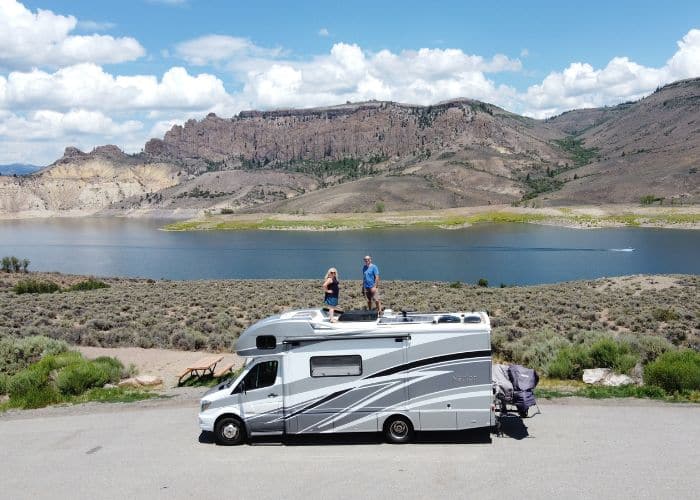
Recommended Resources
Over the years, we’ve found many great resources that we use on our RVs and in our RV life. Here are some relevant to this article:
- Amazon – shop our fave RV gear that we use, love and recommend
- RV Maintenance, Repairs and Tools – find the items we use regularly
- Hot Shot’s Secret RV products – scientifically proven and a 100% money back guarantee. New customers get 10% off + free shipping.
- Our RV Hacks book – discover 400+ hacks for RV life and travel
- Wholesale Warranties – get a quote to protect your RV against expensive repairs
- Premier RV Inspections – get an inspection before buying an RV
- The Real Cost of RV Ownership – what we spent over 6 years of RVing full time (RV purchase, repairs, maintenance, depreciation etc)
- Find more on our Recommended Resources Page
If you have any questions about these resources, just ask. We’re here to help.
Sign up for our email newsletter with the latest RV park reviews, news and updates.
GOT COMMENTS OR QUESTIONS?
We would love to hear from you. Drop us a note in the comments section below.
More RV Repairs and Maintenance Content
Want to check out more RV repairs and maintenance content? Here are some we think you will like. Hover over each image to see the title.
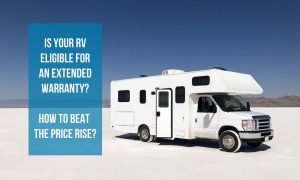
When to Buy an RV Warranty For Best Value
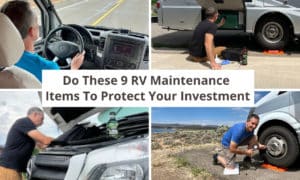
9 RV Maintenance Items To Protect Your Investment

The State of RV Repairs: Problems, Solutions and On-Demand RV Techs
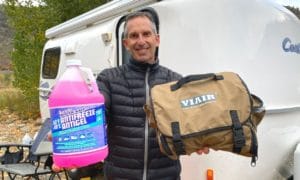
How To Winterize An RV: What You Need
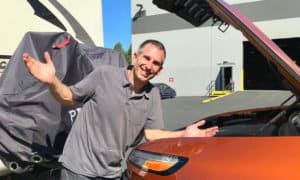
Jeep Death Wobble Fix Update – How We Fixed It

11 More RV Repairs, Mods and Upgrades To Our Motorhome
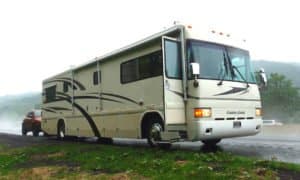
Something is Wrong! Our Death Wobble “Breakdown”

Getting a Professional RV Inspection Before Buying
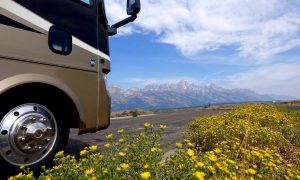
Replacing Our RV Tires for Improved Safety and Performance
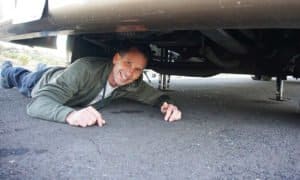
RV Breakdowns: Q&A + 10 Tips for How to Deal with Them
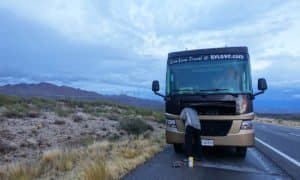
Part 2: 3 RV Breakdowns in a Month
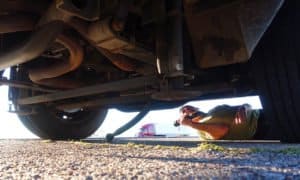
Part 1: 3 RV Breakdowns in a Month
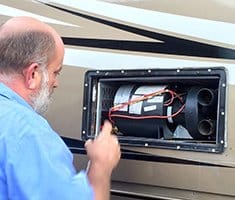
2 Years of RV Repairs & Service Costs
